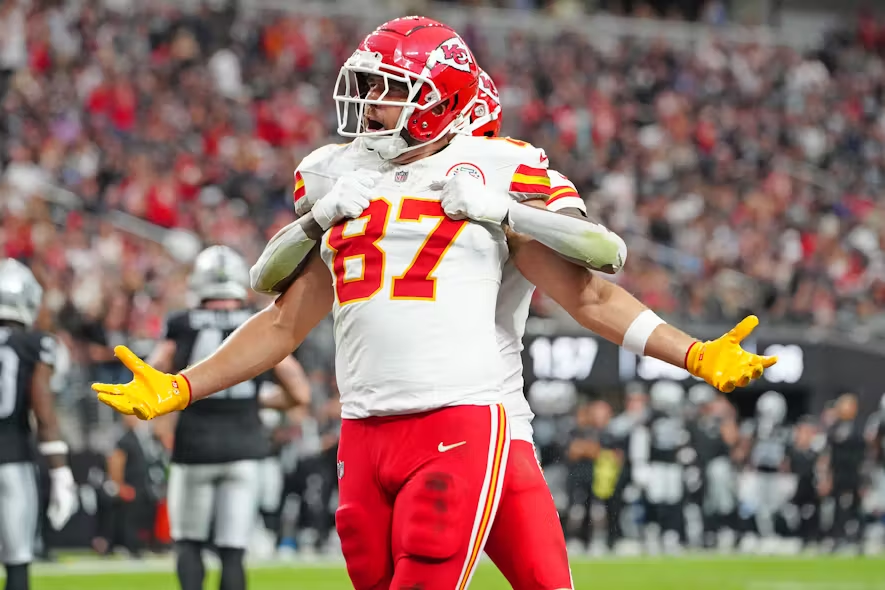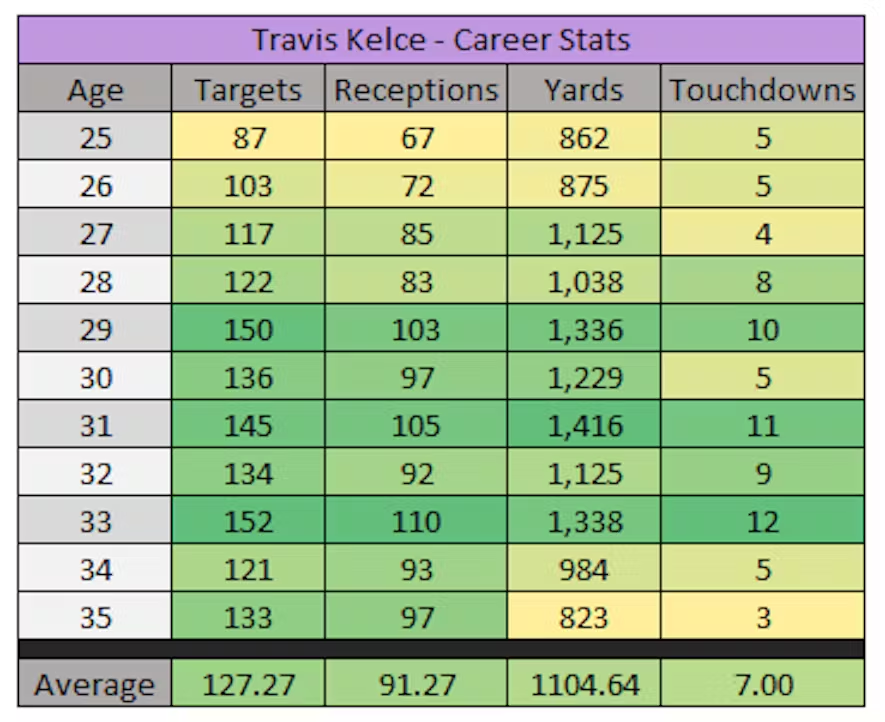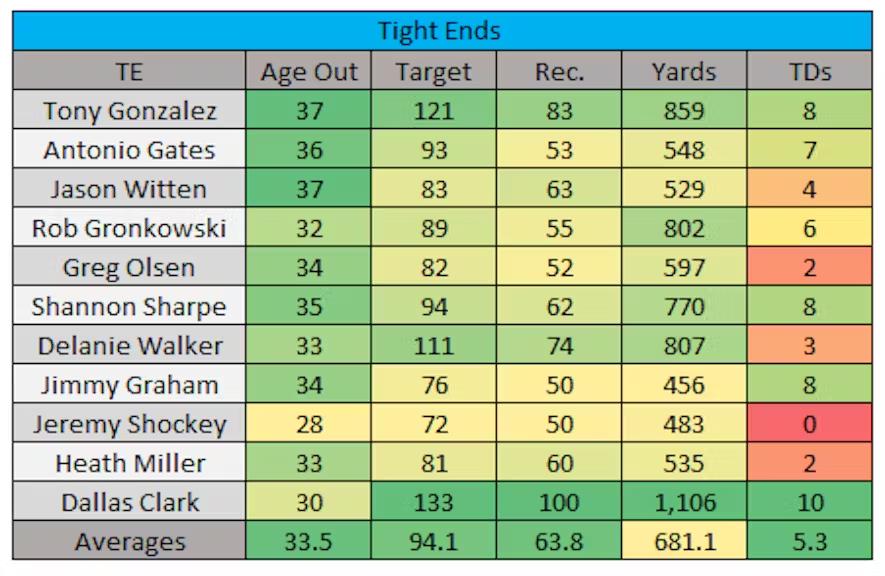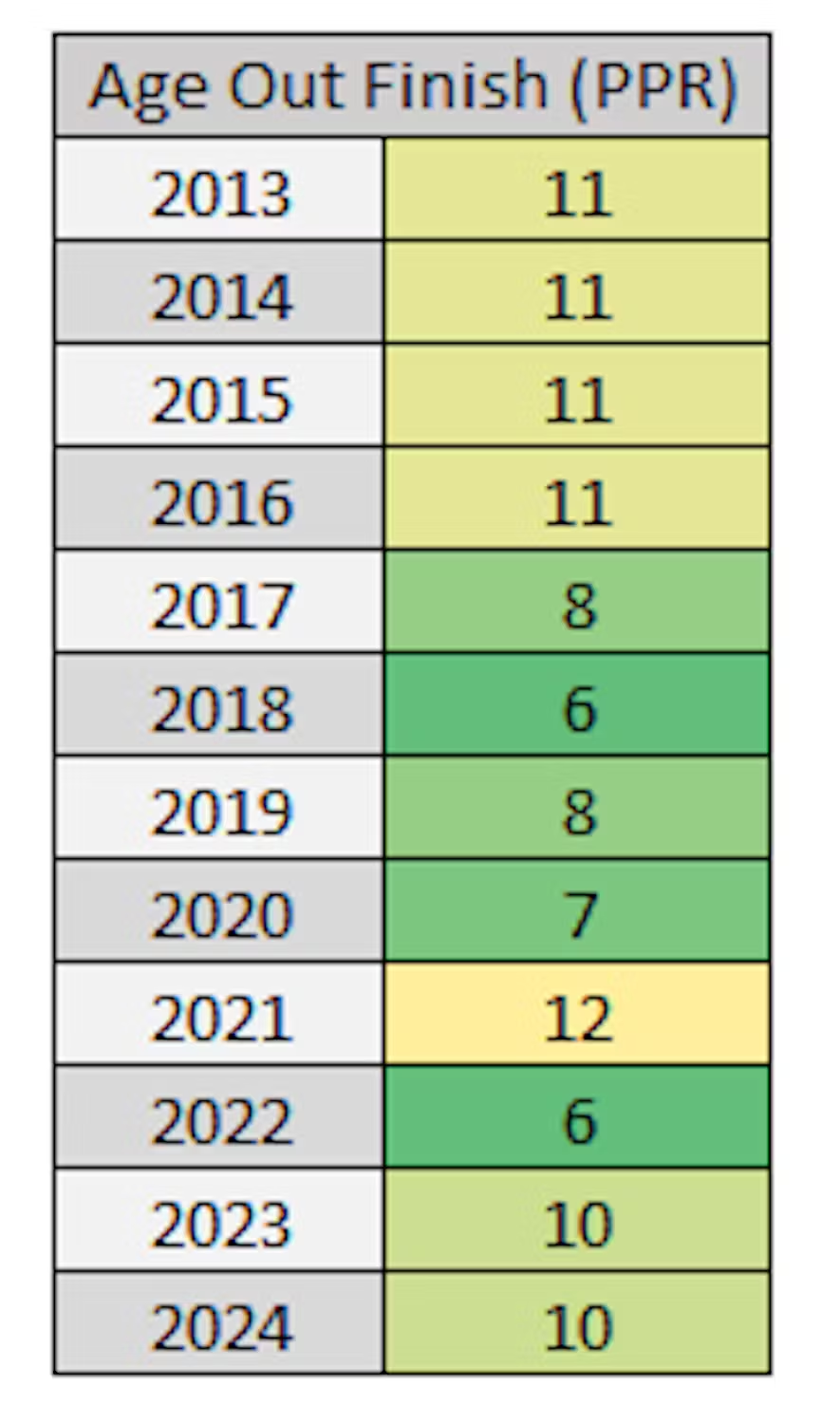RELATED: See this look at Running Back, Wide Receiver, and Tight End.
This article examines some of the greats at the tight-end position and their age-out seasons. I will define an age-out season as the last season with over 50 receptions. This study will provide important information for dynasty and season-long leagues. Fifty receptions serve as the baseline for starting-caliber fantasy production at the position.
The term "elite" is often overused. However, Tony Gonzalez, Antonio Gates, Rob Gronkowski, and the eight other tight ends analyzed in this article are worth the label. When your dynasty roster includes a true elite tight end, you want to keep that production for as long as possible.
The key question arises: "When should we expect a great tight end to stop producing?"
Examining Elite Tight Ends
This article originated from thinking about Travis Kelce. He is currently 35 years old and will turn 36 during the 2025 NFL season. He is entering the final year of his contract.
I wanted to address the notion of when elite tight ends decline. Specifically, I aimed to identify the production cliff for a tight end of this pedigree. I do think 35 should be considered old age, regardless of position. Kelce missed his rookie season with an injury. In the following 11 seasons, he maintained over 65 receptions, 850 yards, and three touchdowns per season. He has seven consecutive seasons with over 90 receptions. Below, you can see his year-by-year stats:
Kelce is a rare asset who provides a significant positional advantage. Not only does he score like a top wide receiver, but he also provides that production from your tight-end slot. As assets age, dynasty players may want to salvage any value they can. This means they may trade a player before he hits the "age cliff" or the point where value drops relative to production.
Concerns about running back decline often influence dynasty players' views on other positions, including tight ends. One study identified the peak age for tight ends as 27.45. This study analyzed every tight end finish over 170 PPR scoring. I am looking at tight ends considered to be the greats and over 50 receptions. There was no specific total point finish. A tight end with over 50 receptions should finish near the top of the season-end rankings.
History of Aging Elite Tight Ends
You may be wondering why I picked these specific tight ends. The tight ends were selected from a list of the most productive players at the position. I left out tight ends from previous eras of the NFL. Mike Ditka was an all-time great but played from 1961 to 1972. The NFL expanded to a 16-game season in 1978. We can still appreciate his 1964 season, concluding with 75 receptions, 897 yards, and five touchdowns in 14 games, which projects near Kelce's seasonal floor.
I felt analyzing tight ends in the more modern-day NFL was necessary. This will provide a stronger correlation to the foreseeable future at the position. How the NFL was played 50 years ago is vastly different from now. The game will also evolve over the next decade. Talent will always remain talent.
Below are the 11 tight ends analyzed for the study and their age-out season:
Reminder: the operational definition of an age-out season is their last season with over 50 receptions. The average age-out season for the sample size is 33.55 years old. You may notice Jeremy Shockey had his age-out season at 28 despite playing until age 31. Over his three remaining seasons, he averaged 62.7 targets, 42.0 receptions, 477.3 yards, and 3.3 touchdowns. This would have put him in the bottom tier for a TE2 finish. While not ideal, that level of production offers bye-week value. Nevertheless, value is to be considered in dynasty.
Talent, scheme, utilization, and injuries are four important variables to address for aging tight ends. These factors matter not just because of age but due to changes in athleticism and usage. Shockey had a knee injury (2003) and broke his leg (2007), which could be attributed to a decline in athleticism and literally the body being unable to do what it could before. Modern science has come a long way. Rather than focusing on individual decline factors, the analysis continues below.
The sample averaged 63.82 receptions, 681.09 yards, and 5.27 touchdowns per season. These total points yield 163.5 PPR points. Here are the season-end finishes over the last 12 seasons:
The average 33.55 age out season has finished as a TE1 for 12 straight years. Notably, these finishes cannot compete with the top wide receivers. Yet, we are not troubled with this as a weekly starting tight end in your lineups. Production is never the issue, while value might be.




